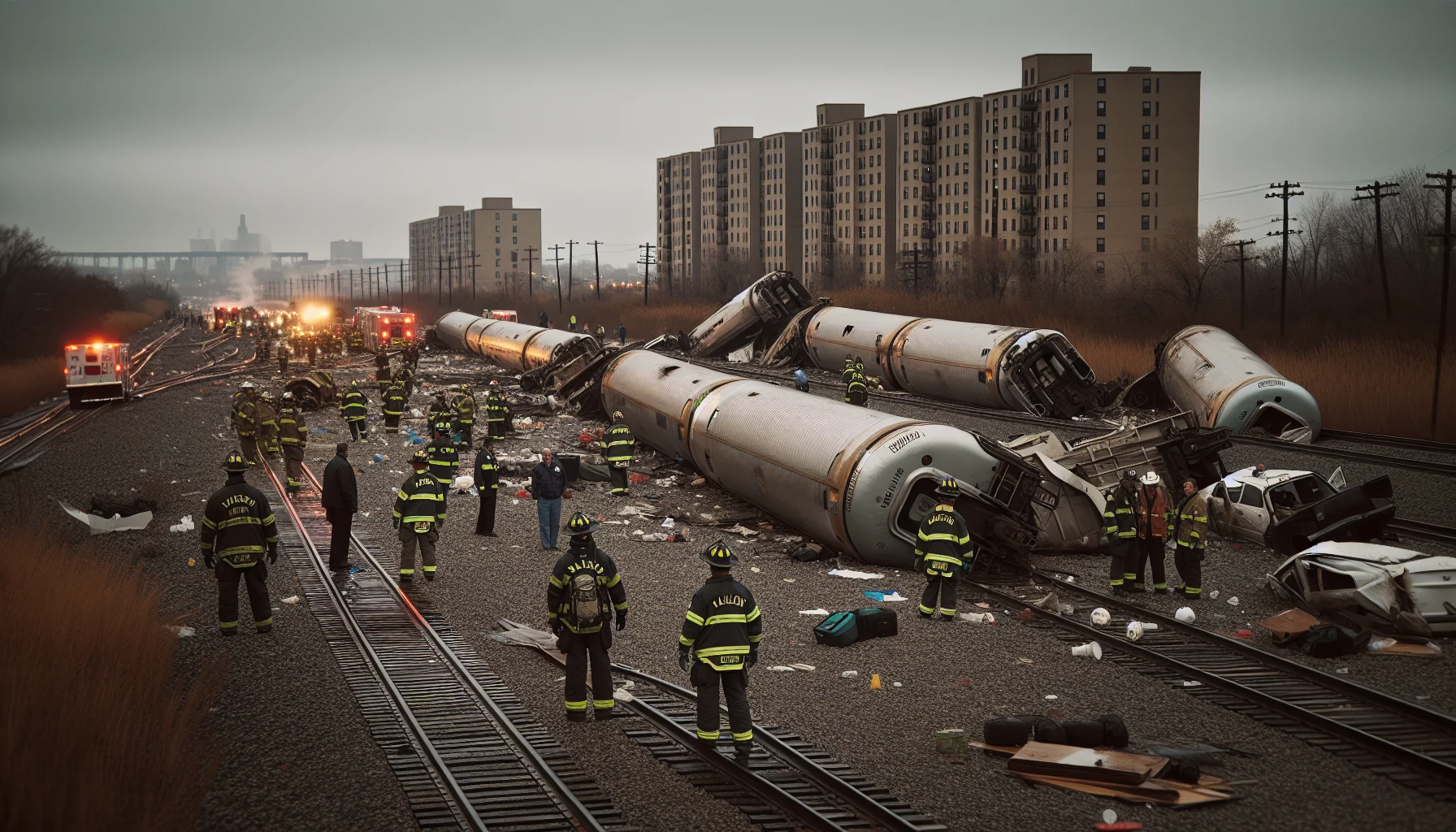
2015 Philadelphia Train Derailment
by: The Calamity Calendar Team
May 12, 2015
A Routine Journey Turned Tragic
On the night of May 12, 2015, the Amtrak Northeast Regional Train 188 set out from Washington, D.C., on a journey that many travelers had taken thousands of times before. Bound for New York City, this train was part of the lifeblood of the bustling Northeast Corridor, the busiest passenger rail line in the United States. It was a crisp, normal evening in Philadelphia — a backdrop like any other for Amtrak's familiar hum through the urban landscape. But unnoticed by the passengers reclining in their seats, the tranquility of their journey would soon be shattered in the Port Richmond neighborhood of Philadelphia.
The Unfolding of Events
At around 9:10 PM, Train 188 departed from Philadelphia's historic 30th Street Station. The journey resumed smoothly until approximately 9:21 PM. As the train approached a notorious left-hand curve in the Port Richmond area, something went terribly wrong. The train was barreling down the tracks at 106 miles per hour — more than double the curve’s 50 mph speed limit. The laws of physics took over, and the train's fate was sealed.
The locomotive and all seven passenger cars violently left the rails, scattering like toys thrown by an unseen hand. Some cars tipped over, one rolled onto its roof, while others lay crumpled among the tracks. In the chaos, eight passengers tragically lost their lives, and over 200 more were injured — some severely. The tranquil night erupted into a cacophony of screeching metal, shattering glass, and human anguish.
Rescue Efforts and Rapid Response
In those critical moments after the derailment, the city of Philadelphia witnessed extraordinary acts of courage and urgency. First responders swarmed the scene, weaving through the tangled wreckage to reach victims trapped inside. Sirens howled into the night as ambulances whisked the most severely injured to nearby hospitals. Emergency personnel, many of whom had never encountered a disaster of this magnitude, worked with grim determination.
While lives were being saved, the National Transportation Safety Board (NTSB) began its meticulous investigation. There was a unanimous outcry for answers: How could such a catastrophe occur on such a busy and vital line?
Piecing Together the Puzzle
In the aftermath, as investigators picked through the debris under a languid sky, an unsettling realization emerged. The absence of Positive Train Control (PTC), a crucial safety system capable of automatically reducing a train's speed, allowed this disaster to unfold. This fact loomed large in the public eye, a stark reminder of what could have been prevented.
Thanks for subscribing!
Amtrak wasted no time. By the end of 2015, they had installed PTC on the entire Northeast Corridor, a project that likely saved countless lives moving forward. But for many families, this assurance came too late.
Subsequent investigations concluded that Brandon Bostian, the train's engineer, lost situational awareness amid radio chatter about other trains being struck by projectiles. In his distracted state, Bostian failed to reduce the train's speed, leading to the derailment. Legal proceedings unfolded, eventually finding Bostian not guilty of criminal negligence, sparking discussions about human error and responsibility in high-stakes environments.
A Legacy of Lessons Learned
The 2015 Philadelphia train derailment did more than just claim lives; it served as a wake-up call for rail safety across the nation. The tragedy highlighted urgent technological needs and catalyzed a transformation in how rail lines operate. Positive Train Control became non-negotiable, altering the landscape of rail safety standards across the United States.
Looking back, the derailment is remembered not only for its tragic toll but also for igniting widespread change. It’s a chilling testament to the cost of progress and the heavy burden borne by those caught in the crosshairs of preventable calamity. For the loved ones of the victims and the survivors, May 12 will forever be etched in memory — a night that altered the course of their lives and reshaped the future of American rail travel.
Stay in the Loop!
Become a Calamity Insider and get exclusive Calamity Calendar updates delivered straight to your inbox.
Thanks! You're now subscribed.